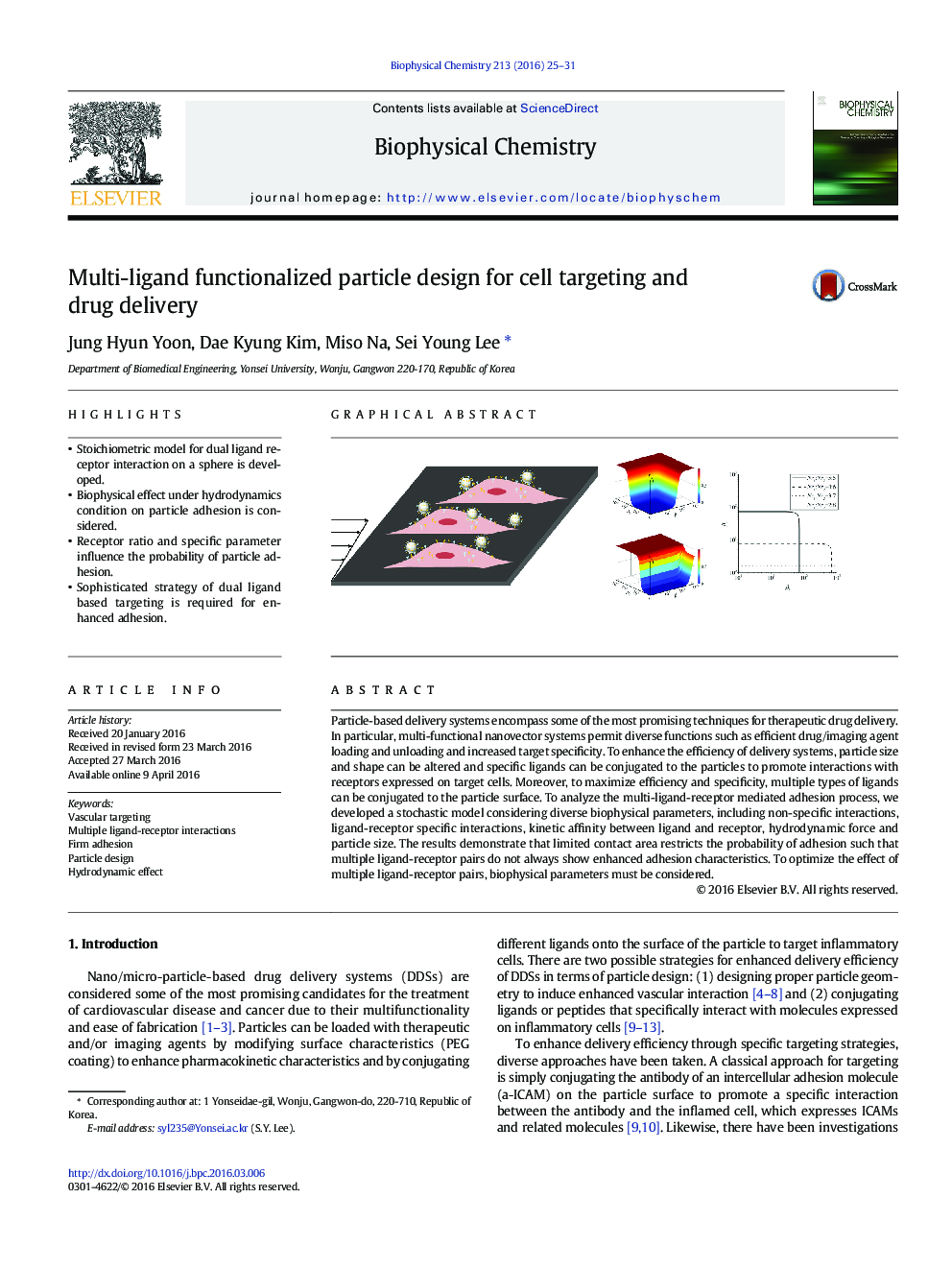| Article ID | Journal | Published Year | Pages | File Type |
|---|---|---|---|---|
| 5370759 | Biophysical Chemistry | 2016 | 7 Pages |
â¢Stoichiometric model for dual ligand receptor interaction on a sphere is developed.â¢Biophysical effect under hydrodynamics condition on particle adhesion is considered.â¢Receptor ratio and specific parameter influence the probability of particle adhesion.â¢Sophisticated strategy of dual ligand based targeting is required for enhanced adhesion.
Particle-based delivery systems encompass some of the most promising techniques for therapeutic drug delivery. In particular, multi-functional nanovector systems permit diverse functions such as efficient drug/imaging agent loading and unloading and increased target specificity. To enhance the efficiency of delivery systems, particle size and shape can be altered and specific ligands can be conjugated to the particles to promote interactions with receptors expressed on target cells. Moreover, to maximize efficiency and specificity, multiple types of ligands can be conjugated to the particle surface. To analyze the multi-ligand-receptor mediated adhesion process, we developed a stochastic model considering diverse biophysical parameters, including non-specific interactions, ligand-receptor specific interactions, kinetic affinity between ligand and receptor, hydrodynamic force and particle size. The results demonstrate that limited contact area restricts the probability of adhesion such that multiple ligand-receptor pairs do not always show enhanced adhesion characteristics. To optimize the effect of multiple ligand-receptor pairs, biophysical parameters must be considered.
Graphical abstractDownload full-size image
